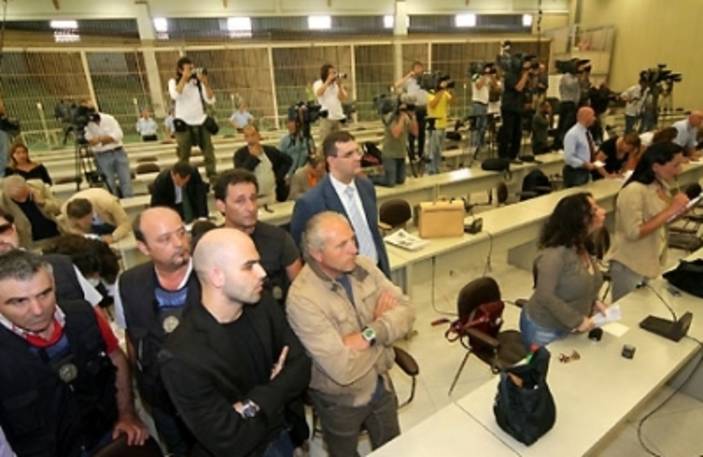


Roberto Saviano's bestseller Gomorrah, translated in forty-two different languages, is not just an excellent book. It’s real life.
An appeals court in Naples upheld sixteen life imprisonments of members of the supposedly most powerful Mafia crime ring in the Naples area, the Camorra clan, in a high-stakes trial on Thursday. Better known as “Spartacus” by the Italian media, it was potentially one of the biggest and most widely publicized trials the Italian court system has seen in years. The situation was so tense that four crucial witnesses to the clan’s pending indictment (including the boss of a waste management firm as well as two informants) were brutally murdered months leading up to the verdict. When the verdict was finally announced, the courtroom was packed with cameramen, news teams from all over Italy, journalists, and an anxious Saviano who wanted to witness it firsthand. Funny enough, the first disappointing verdict was dragged out from 1998 to 2005 and was met with little or no enthusiasm in the media or Italian public, which eventually released the defendants due to extenuating circumstances and other technicalities.
Gomorrah was the main reason for sparking the interest in the current court case, attaining almost instant popularity—with a million copies sold in Italy alone, where a palpable interest in reading has dwindled in recent years. Saviano first started to receive anonymous death threats after the book’s publication in 2006: his risky and daring endeavour in his infamous book was to expose the Camorra clan’s illicit top secret activities, including drug trafficking, toxic waste disposal, business affairs in construction and in the clothing industry, and their “connections” stretching into Northern and Central Italy and even into the remote areas of Eastern Europe from their main headquarters in Naples. Saviano was consequently placed under a close 24-hour surveillance by police upon receiving these numerous death threats, instigated much further by the pending trial.
The final sentence is all but a unique result. Saviano declared that “[the ultimate verdict convicting the Mafiosi] is a victory for anti-mafia prosecutors and also countless reporters who worked behind the scenes.” The famous writer added that victories like these are “only the beginning.” Two of the four top bosses, Francesco 'Sandokan' Schiavone and Francesco Bidognetti – better known as 'Cicciott' e 'Mezzanotte' ('Fatty' and 'Midnight') – were convicted, but Michele Zigaria and Antonio Iovine are still at large.
Source URL: http://440468.6bgr9ubv.asia/magazine/focus/facts-stories/article/gomorrah-courtroom
Links
[1] http://440468.6bgr9ubv.asia/files/gomorr1214002782jpg